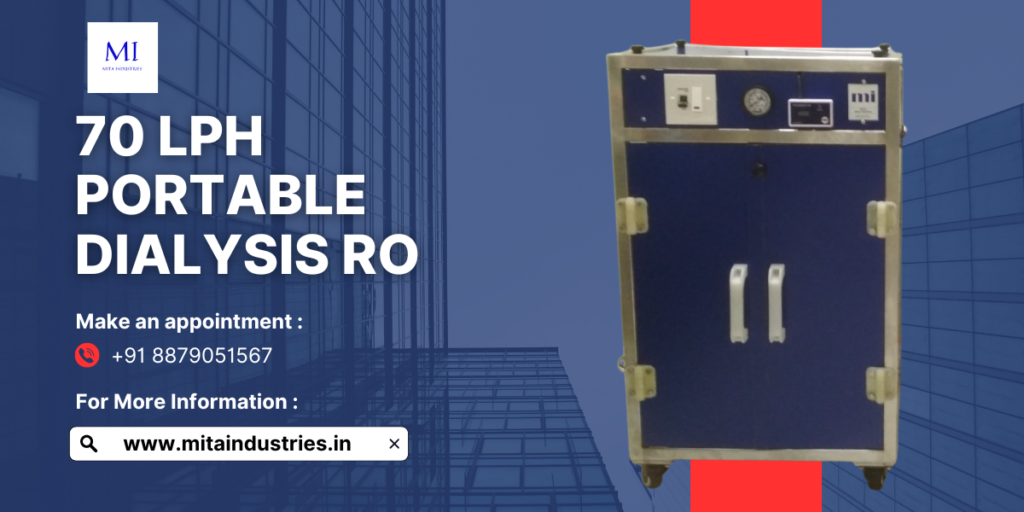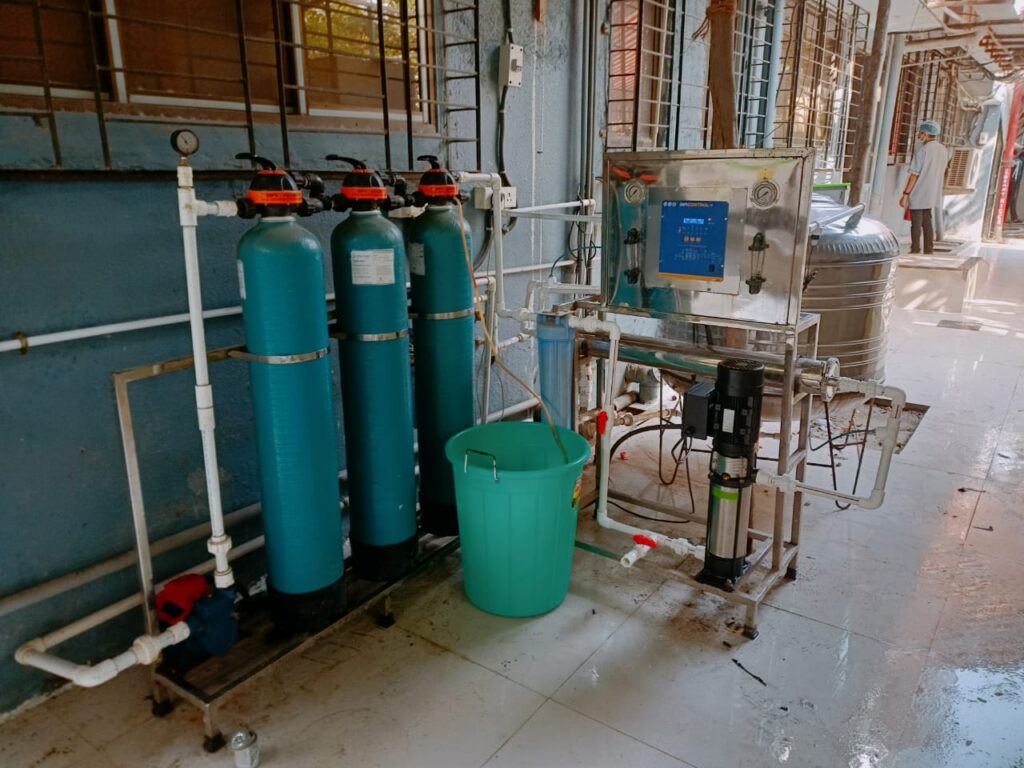
Introduction:
In medical clinics, especially those that provide dialysis services & those wanting to start dialysis service, the quality of water is used for patient safety and better treatment. Dialysis, a procedure that artificially performs the functions of the kidneys, relies heavily on purified water to prevent complications and the effectiveness of the treatment. Reverse Osmosis (RO) systems play a vital role in achieving this high standard of water purity. This essay explores the necessity of RO systems in medical clinics, focusing on their function, benefits, and overall impact on patient care and clinic operations.

Reverse Osmosis (RO) Systems:
Reverse Osmosis is a filtration technology that removes contaminants from water by forcing it through the membrane. This membrane allows water molecules to pass through while blocking larger molecules, such as dissolved salts, bacteria, and other impurities. The RO process typically involves several stages.
1. Pre-Filtration: Water first passes through pre-filters that remove larger particles and chlorine, which can damage the RO membrane.
2. RO Membrane Filtration: The water is then forced through the RO membrane, which performs the primary filtration, removing a majority of dissolved impurities.
3. Post-Filtration: The filtered water may pass through additional stages of filtration, such as activated carbon filters, to further purify it and enhance taste and odor.
4. Storage and Distribution: The purified water is mostly stored in the stainless steel tank and distributed for use in dialysis and other medical procedures.

The Necessity of RO Systems in Medical Clinics:
- Ensuring Water Purity: The primary reason medical clinics, particularly those offering dialysis, require RO systems is for the highest level of water purity. The RO process effectively removes harmful contaminants that could compromise patient safety. For instance, bacteria and endotoxins, which are critical concerns in dialysis, are effectively removed by RO systems, reducing the risk of infections.
- Compliance with Standards: Dialysis treatment is governed by strict regulatory standards, such as those set by the U.S. Centres for Medicare & Medical Services (CMS) and the Association for the Advancement of Medical Instrumentation (AAMI). These standards specify the maximum allowable levels of contaminants in dialysis water. RO systems help clinics meet these stringent requirements by consistently providing water that meets these standards.
- Preventing Complications: Impurities in dialysis water can lead to a range of complications. For example, high levels of calcium or magnesium can cause calcification in the body, while contaminants such as chloramines can lead to severe allergic reactions. RO systems help to reduce these risks by producing water that is free from such harmful substances
- Enhancing Treatment Efficacy: The effectiveness of dialysis depends on the quality of the dialysate. If the water used is not adequately purified, it can affect the dialysate’s ability to effectively remove waste products from the blood. By providing consistently high-quality water, RO systems ensure that the dialysis process operates at optimistic efficiency.
5. Reducing Long-Term Costs: While the initial investment in an RO system can be significant, the long-term benefits outweigh the costs. RO systems help to reduce treatment-related complications and hospital readmissions, which can be expensive. Additionally, they minimize the need for costly repairs or replacements of dialysis equipment damaged by impurities in the water.
6. Protecting Equipment: Impurities in water can lead to scaling and corrosion of dialysis machines and associated plumbing. RO systems help protect these valuable assets by providing clean water that reduces the risk of damage, thereby extending the lifespan of the equipment and reducing maintenance costs.

